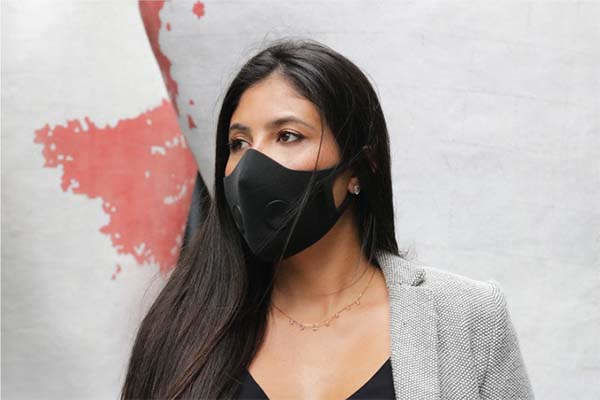 Let’s be real: For those of us currently working from home, a full face of makeup has been rendered totally unnecessary—but despite giving our skin a much-needed breather right now, acne can still be an issue (hello, stress breakouts!).
Let’s be real: For those of us currently working from home, a full face of makeup has been rendered totally unnecessary—but despite giving our skin a much-needed breather right now, acne can still be an issue (hello, stress breakouts!).
It’s not just the added anxiety of coronavirus that might be making you break out a little more than usual right now, though. If you’ve been diligently wearing your face mask whenever you leave the house (only for essentials, we hope!) and you’ve noticed a few extra pimples in those specific areas (the bridge of your nose, your cheeks, and your chin) you may be experiencing what dermatologists are calling “maskne.”
What exactly is maskne and why does it happen?
As the name suggests, maskne is a type of breakout that results from wearing a face mask. “Maskne is acne formed in areas due to friction, pressure, stretching, rubbing or occlusion,” Nazanin Saedi, MD, a board-certified dermatologist at Thomas Jefferson University, explains to Health. “You can see it in the areas covered by the mask and also the areas where the mask and face shields touch the skin.”
Kathleen C. Suozzi, MD, director of Yale Medicine’s Aesthetic Dermatology Program and an assistant professor of dermatology, explains that maskne is technically referred to as acne mechanica.
Prior to the pandemic, this form of facial irritation was primarily experienced by athletes, “commonly due to the sweat, heat, and friction in their helmets and straps,” Dr. Saedi explains. “We are seeing it more now with people wearing masks for an extended period of time.” Dr Suozzi adds that you also get acne mechanica in your armpits from using crutches.
Overall, Dr. Saedi explains that maskne—and often, acne mechanica in general—is triggered by pores being blocked by sweat, oil, and makeup. For masks in particular, “while breathing for hours with the mask on, it creates humidity to [form] a breeding ground for acne,” she explains. The friction of the mask can also block and clog pores, leading to the formation of comedones or blackheads, says Dr. Suozzi.
How can you prevent and treat maskne?
Prevention is always your best bet. If you are wearing a cloth mask, wash it daily, urges Dr. Saedi. If you are wearing a disposable mask, try to replace it as often as possible or allow it to air out in between uses. And for tight-fitting N95 respirators—which should be reserved for essential workers right now—Dr. Suozzi suggests applying silicone gel strips to sit under the pressure points of the mask. “This will help prevent against skin irritation,” she explains.
If you start developing maskne, first and foremost, be gentle—that means going easy on at-home spa days. “People might be overdoing it at home with face masks, scrubs, washes, and toners,” says Dr Suozzi, who adds overdoing skincare right now can compromise your skin’s protective barrier. Instead, wash your face with a gentle cleanser, says Dr Saedi. “I would avoid products that are too drying because they will cause the skin barrier to become more compromised.” She suggests a face wash with salicylic acid, like Neutrogena Oil-Free Acne Wash Pink Grapefruit Facial Cleanser to help unclog the pores.
For hydration after washing, look for products with hyaluronic acids, like Neutrogena Hydro Boost Gel-Cream, says Dr Saedi. You can also “help build a healthy barrier” between the mask and your skin by using a facial cleanser and cream with ceramides. Both Dr Saedi and Dr Suozzi recommend soothing emollients, like CeraVe Moisturizing Cream, “to help calm the irritation caused by friction.”
As far as treatment options go for acne breakouts, “over the counter products that help resolve the clogged pores are beneficial,” says Dr Suozzi. For that, she recommends products like Differin Acne Treatment Gel or La Roche-Posay Effaclar Adapalene Gel
And while wearing your mask out in public right now is essential–especially in social settings where physical distancing is difficult to maintain—remember you can (and should!) take the mask off and give your face a necessary breather when you’re away from other people, like in your own home (provided you’re not caring for anyone ill) and while driving your car.

